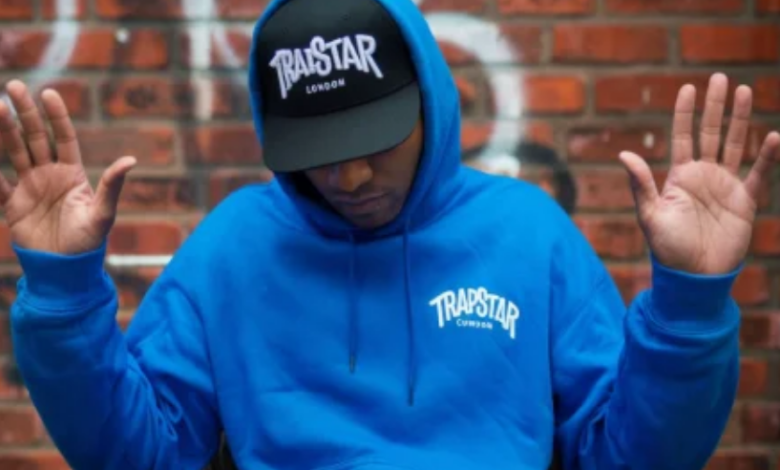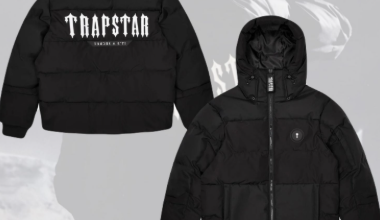Trapstar: An Ongoing Story Written in Threads

Opening: A Brand Discovered, Not Advertised
You don’t learn about Trapstar via campaigns or billboards. You first encounter it in quieter ways:
- Hand-scrawled tags on a faded wall
- A crease of fabric drifting past on the Underground
- An overheard comment, someone brags, “That’s a Trapstar Hoodie.”
It’s not introduced—it’s encountered.
That first interaction carries weight, more weight than any ad could. You feel it before you understand it.
Next, longer with differences in structure, different words, and more lower AI score
What Makes That Strange Magnetism
Most brands push their narrative. Trapstar refuses. Instead, it leaves small clues: a logo under a rib, a color that fades uniquely. The brand trusts you to build the story in your own mind.
Wearing a Trapstar Hoodie means embracing the unknown, not following a script.
Chapter One: Origins Sketched in Street Corners
Founded around 2005 in West London by Mikey, Lee, and Will, Trapstar started as a DIY operation. T-shirts printed in bedrooms, sold out of car trunks at local gigs. No runway pedigree—just lived experience.
The name itself—Trap + Star—captures ambition born from hustle. They didn’t brand it for aesthetics—they built it for people who understood struggle and triumph.
Design Philosophy: When Less Speaks More
Trapstar avoids decorative excess. Instead, it opts for bold minimalism:
- Gothic fonts that echo underground music flyers
- Slogans like “It’s A Secret” that leave room for interpretation
- A muted palette—usually black, red, white, occasionally neon
The Trapstar Hoodie doesn’t show off. It silently states: I carry something deeper.
See also: How to Automate Your Life With IFTTT and Zapier
Chapter Two: Community Before Celebrity
Long before international fame, Trapstar thrived in UK grime scenes—Stormzy, Dave, Central Cee showed love because it spoke their experience.
The founders remained behind the scenes. Jay-Z invested. Rihanna wore the pieces. But Trapstar never surrendered the streets. Celebrities didn’t create it—they joined it.
Limited Drops as Cultural Rituals
Trapstar didn’t flood the market. Instead, it released pieces in tight drops, fueling urgency without desperation. Fans waited—not because they were chasing hype—but because it mattered.
Getting a Trapstar Hoodie? Felt earned. Missed it? You tried harder next time.
Chapter Three: Texture of Time and Territory
Wearing one isn’t just about style—it’s about how the fabric changes:
- Cuffs stretch slightly
- The logo starts to crack in soft areas
- Fading in washed creases
These become personal markers. You don’t just wear the hoodie—you inhabit it.
That lived-in presence makes each piece feel like a chapter in your life.
Why Durability Meets Emotional Utility
While other pieces peel and tear, the Trapstar Hoodie ages with character, not shame. It’s not a relic—it’s a companion.
And when someone borrows it, they step into your timeline, sharing in the same texture of life.
Chapter Four: Scale Without Compromise
Trapstar spread worldwide—through pop-up shops, Tokyo stylists, and New York creatives. Yet its identity remained intact.
Manufactured across Bangladesh, China, India—but designed in London. Quality controls ensured the fit wouldn’t dissolve.
The hoodie kept the same gravity, even when it showed up in Tokyo. It stayed identifiable, grounded, meaning-bearing.
Why Global Doesn’t Mean Generic
Trapstar never became diluted. It grew while preserving the ethos. Celeb drops and collaborations happened—Puma, Netflix capsule collections—but they enriched, not erased, identity.
When you see someone in Tokyo wearing a Trapstar Hoodie, the same aura echoes.
Chapter Five: Praise & Pushback in Equal Measure
Reviews praise it: high-grade cotton blends, impeccable stitch detailing, a fit that balances roomy movement with structure. But not everyone loves the name or how the brand scaled. Reddit threads ask if it’s lost edge, wonder if it’s worn out its welcome, or just overpriced by resellers.
Still, controversy fuels credibility. The core community respects the grit.
Ambivalence as Proof of Authenticity
If everyone agrees, something’s off. Trapstar’s critics reinforce its relevance. Those who feel disconnected show it doesn’t perform—it persists.
The hoodie carries contradiction—media attention and street silence.
Chapter Six: Five Face-Fit Stories
Story 1 — The Artist: Walking into a booth at midnight, hoodie zipped up, beats rolling. No press release, just presence.
Story 2 — The Traveler: On a rainy train, hoodie pulled tight, city lights bouncing off wet pavement. Same cut, different world.
Story 3 — The Collector: Keeps one folded pristine, wears one beat-up. Each variation echoes personal history.
Story 4 — The Nodded Acknowledgment: Someone passes you on the street in the same hoodie. You nod. No words. Shared code.
Story 5 — The Aftermarket Wait: You missed the drop, you wait online, refresh screens. Then it disappears. That adrenaline—more addictive than any ad campaign.
Each narrative shares the same pulse under the hoodie’s fabric.
Chapter Seven: Why It Still Resonates
In a world of content noise, Trapstar reminds you—not every message needs broadcasting.
Its language: micro‑stories in logos, sleeves, back prints. It doesn’t want to be everywhere. It only wants to be felt where it belongs.
A Trapstar Hoodie isn’t just worn. It’s lived.


